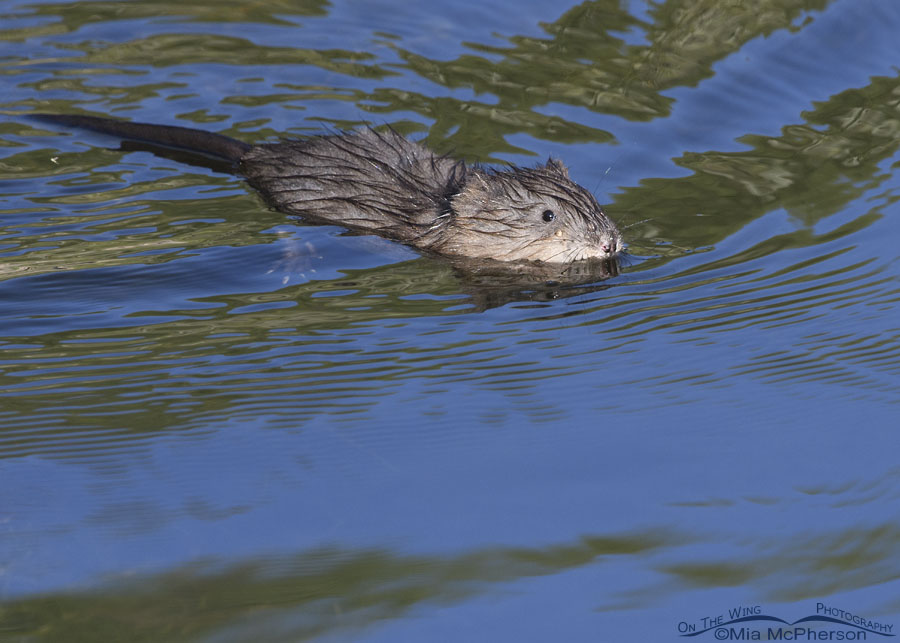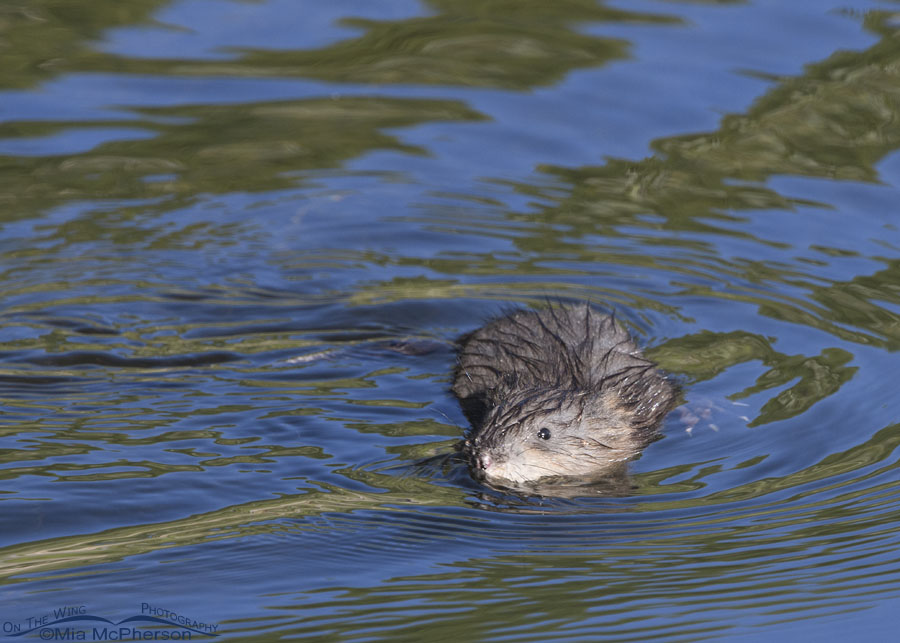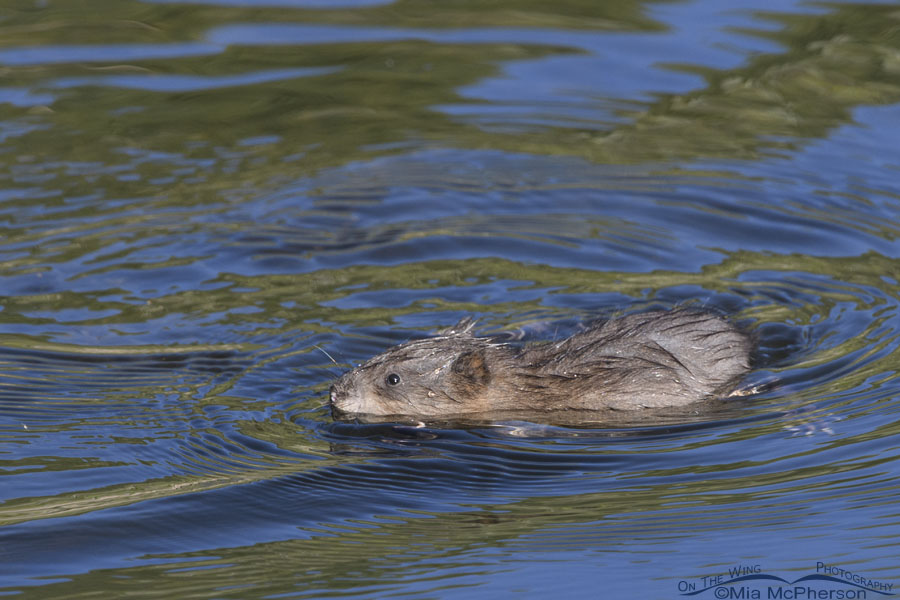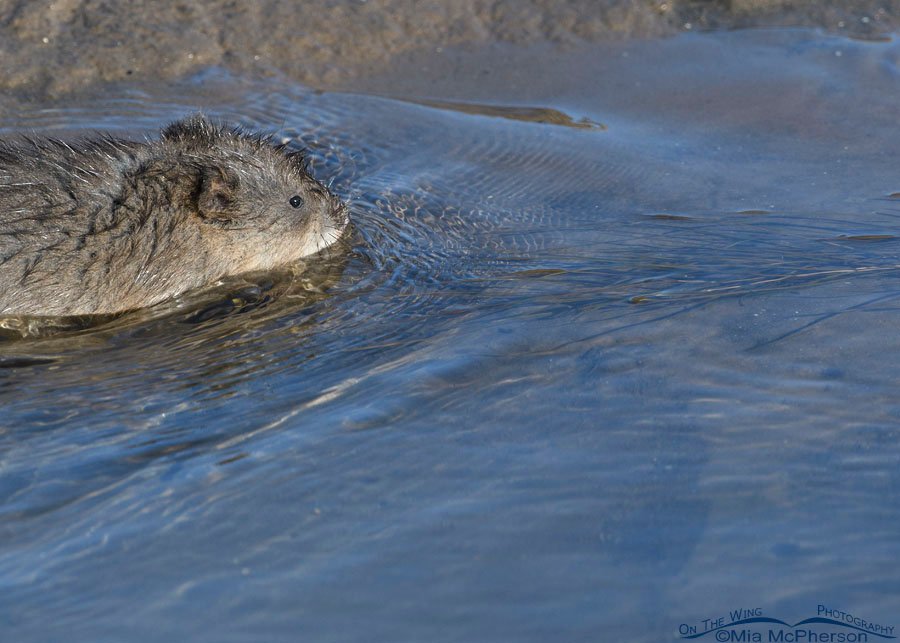I came across these images of a Muskrat kit that I photographed in July of 2020 high in the Wasatch Mountains and realized I hadn’t shared the images of it yet. Today is as good as day as any, especially since I haven’t been out in the field much lately.
 Muskrat kit high in the Wasatch Mountains – Nikon D500, f8, 1/800, ISO 500, -1.0 EV, Nikkor 500mm VR with 1.4x TC, natural light
Muskrat kit high in the Wasatch Mountains – Nikon D500, f8, 1/800, ISO 500, -1.0 EV, Nikkor 500mm VR with 1.4x TC, natural light
I was taking photos of birds that were coming into a stand of willow when the young Muskrat caught my eye. As it swam towards me I took photo after photo and marveled at how small it was. I had photographed adult Muskrats in the same area a few days prior and there was a striking size difference.
 Curious Muskrat baby in an alpine creek – Nikon D500, f8, 1/800, ISO 500, -1.0 EV, Nikkor 500mm VR with 1.4x TC, natural light
Curious Muskrat baby in an alpine creek – Nikon D500, f8, 1/800, ISO 500, -1.0 EV, Nikkor 500mm VR with 1.4x TC, natural light
The Muskrat baby also had a softer, sweeter look to its face than the adults had. I think the young Muskrat might have been a little curious about the shutter sounds coming from my Jeep. It swam even closer to me than I thought it might. Plus it kept its eyes on me the entire time.
 Muskrat kit in Summit County – Nikon D500, f8, 1/800, ISO 500, -1.0 EV, Nikkor 500mm VR with 1.4x TC, natural light
Muskrat kit in Summit County – Nikon D500, f8, 1/800, ISO 500, -1.0 EV, Nikkor 500mm VR with 1.4x TC, natural light
I watched the baby Muskrat swimming around in the alpine creek and wondered if there were any other kits nearby. This was the only kit that I saw that morning. It didn’t seem to be in a hurry to get anywhere and it wasn’t eating anything. Perhaps it was simply exploring its world in the mountains.
Note:
In some areas Muskrats are considered pests because they burrow into the ground near shorelines, dikes, and dams to create their lodges. They also consume crops like rice and other aquaculture. Muskrats are often trapped and euthanized because of that.
My thoughts on that? We’ve put humans in space, surely we can come up with something more humane than euthanizing these creatures.
Additionally, Muskrats are a keystone species. Their burrowing and feeding habits can have a big impact on the ecosystems they inhabit. For example, their burrowing can create new wetland habitats, and their feeding on plants can help keep those plants from overrunning the area.
 Muskrat baby close up in the Wasatch Mountains – Nikon D500, f8, 1/1000, ISO 500, -1.0 EV, Nikkor 500mm VR with 1.4x TC, natural light
Muskrat baby close up in the Wasatch Mountains – Nikon D500, f8, 1/1000, ISO 500, -1.0 EV, Nikkor 500mm VR with 1.4x TC, natural light
When the Muskrat kit moved a bit closer I wasn’t able to fit the whole body of the Muskrat kit in my viewfinder. I was delighted to take a few portraits of it. Then a bird flew in and caught my attention. After I took images of the bird I looked for the Muskrat baby but it had moved out of my line of sight.
I must have posted a bunch of bird photos from that morning and forgotten about the Muskrat kit. I am glad I saw them again so I could share them today.
Life is good.
Mia
Click here to see more of my Muskrat photos plus facts and information about this species.


The little guy is just cruising around figuring out his world. Neat pics. Thanks Mia.
A little cutie for sure! Love the ripples the kit is making through the water. (And now have “Muskrat Love” as an earworm. )
)
WHAT a charmer.
And sigh at our treatment of yet another keystone species.